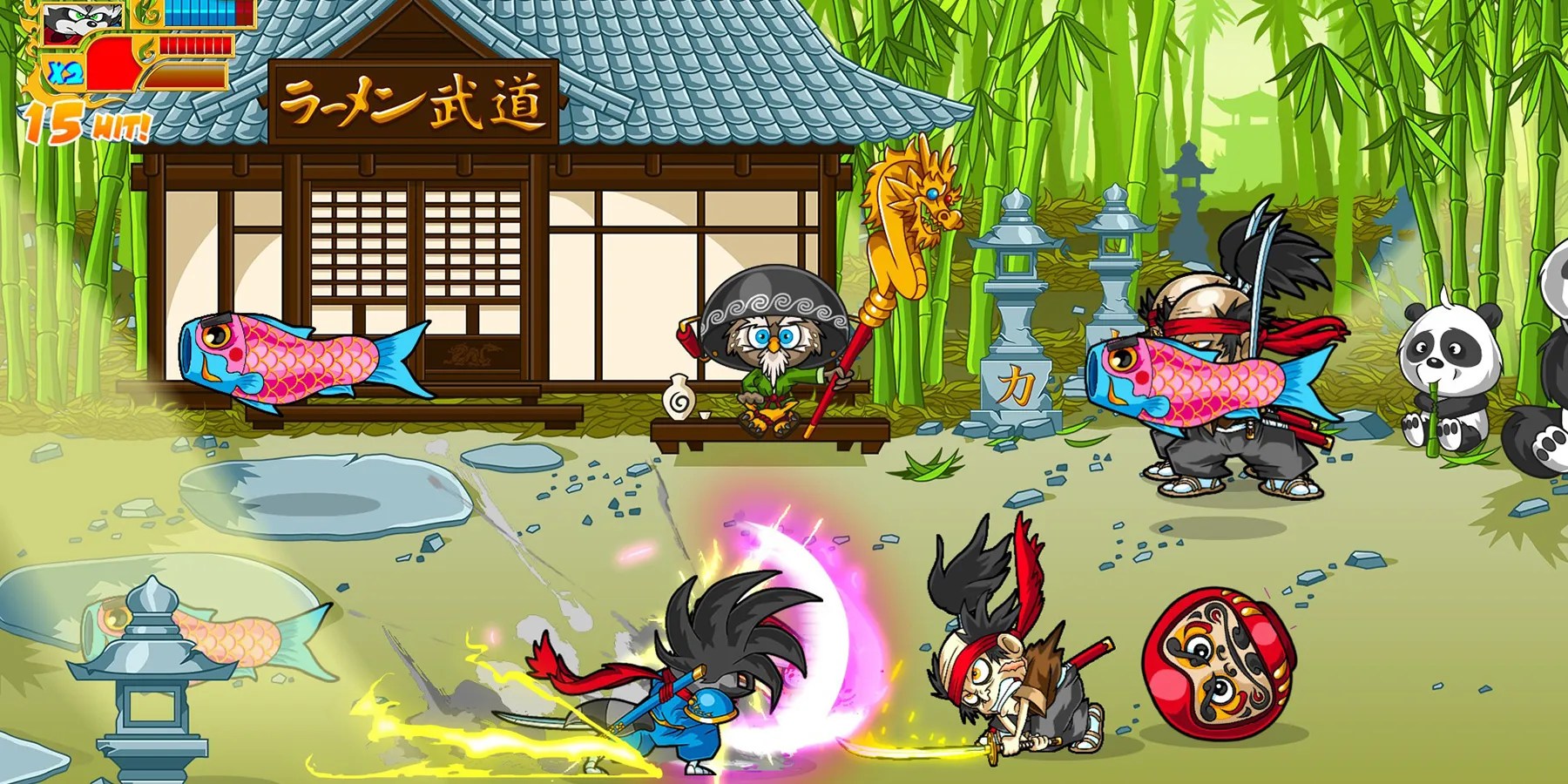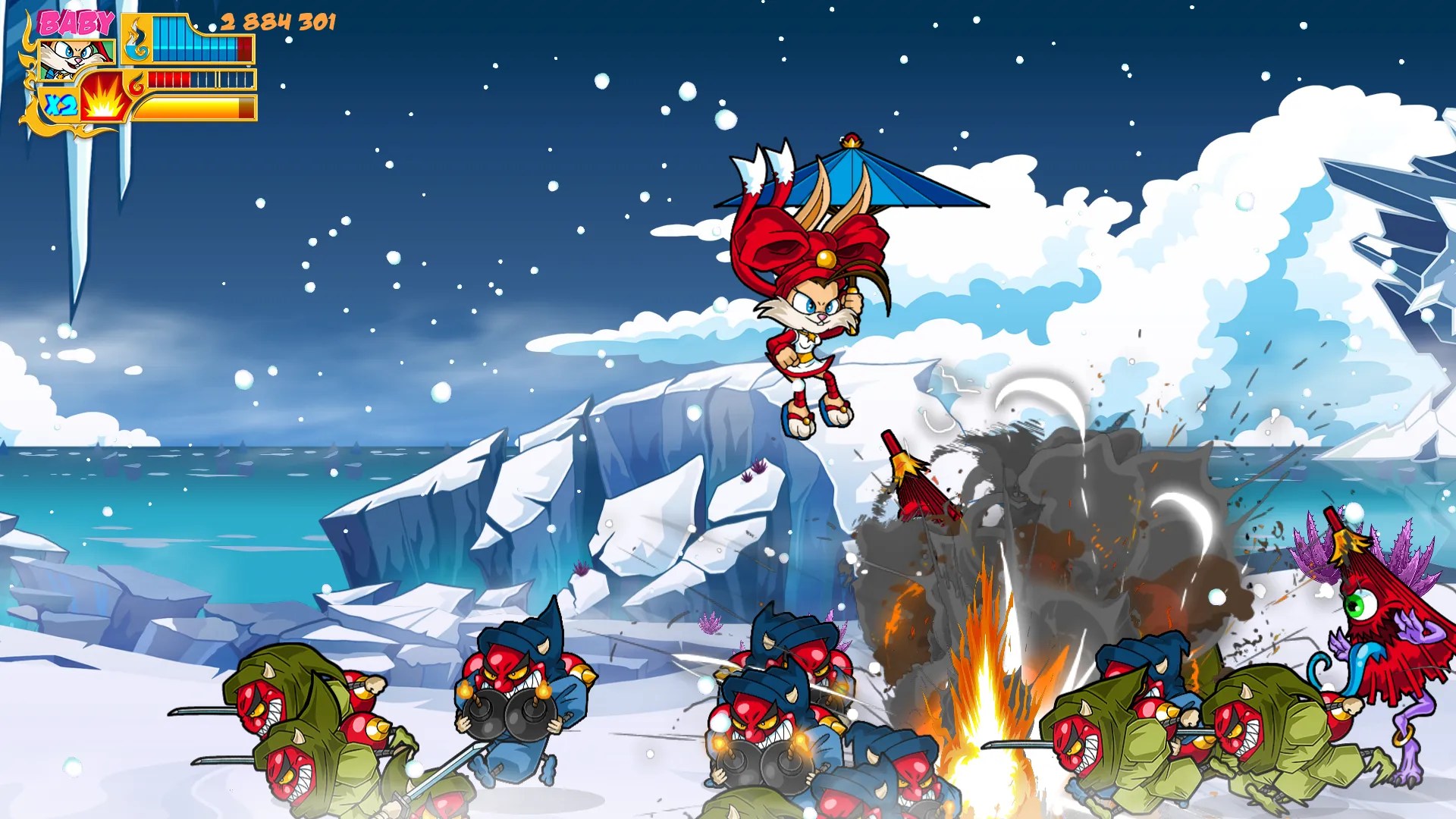Tanuki Creative Studio’s maiden voyage,Jitsu Squad, is a paradoxical four-player beat ‘em up. The newly releasedindie gameis reminiscent of the arcade renaissance of the early 1990s, featuring frantic action that consumes the entire play area. Simultaneously, the title appeals to modern audiences with high-quality animated graphics, and mechanics designed to disrupt the fatigue that can settle in over prolonged play sessions.
Game Rant spoke with lead creators Dave Baljon and Sebastien Romero about the challenges of keeping a classic, relatively simplistic formula fresh and compelling in 2022.Jitsu Squad’s primary appeal is the influence it draws from traditional one-on-one fighting games, and its roster of selectable characters with completely different styles. With influences spanningMarvel vs. Capcom,Samurai Pizza Cats, andother classic Capcom brawlers,Jitsu Squadsimultaneously looks to the past and future of its genre.

RELATED:Steel Assault Dev Sri Kankanahalli Discusses its Zipline Ability and Mechanical Influences
Unique Characters With Distinct Abilities
Both Baljon and Romero are enormous fans of beat ‘em ups and fighting games, and that affection comes through their roster of characters. Each embodya different fighting game archetype, according to Romero.
All the four characters are very, very different. If you start over again and play with Baby, or play with Aros, it’s almost a different game from playing with Jazz or Hero. We really didn’t want to make two characters the same because why would we?

Baljon describes Hero, the raccoon samurai, as “the Ryu ofJitsu Squad,” with well-rounded and accessible mechanics beneath a broadly appealing character design. Jazz, an afro-sporting frog mystic, has a double jump ability that affords him enormous air combo potential. Baby, the lady rabbit, is the fastest member of the roster and boasts projectile attacks that change her outfit. Finally, Aros, a bull with a metal arm, is a classic grappler, performing grabs that can catch multiple enemies at once and segue into screen-shaking pile drivers. When Tanuki Creative released theJitsu Squaddemo, Romero and Baljon were pleased to hear players found Aros asurprisingly satisfying fighting game character; even those who normally do not enjoy “heavy” characters.
Each character boasts three sub-weapons inspired by iconic weapons from titles such asCastlevaniaandDevil May Cry. These further differentiate the characters from each other, opening up new combos and allowing players to change their tactics to suit different situations on the fly. But these abilities and extra armaments are not the only differentiating factor between players inJitsu Squad.
Borrowing the Best from Fighting Games
Tanuki Creative Studios has a relatively simple guiding philosophy for adding mechanics toJitsu Squad.Baljon said if it’s fun, they find a way to include it, regardless of how much work it will require.
“I can’t think of another beat ‘em up that has as much work in four characters as we do. Characters have the opportunity to trigger fury mode, where they get new armor and switch back to their human form. You can only enter fury mode for a brief period of time, but while it’s active, you have the opportunity to use your special move. When two or three players go into fury mode at once, everything explodes. It’s a complete frenzy.”
Special meters and super moves are nothing new to beat ‘em ups, but the fact that each character has separate, hand-drawn sprites and animation is impressive. Super moves aren’t the only fighting game mechanic Baljon and Romero have borrowed. Summoned guest characters, not to be confused withplayable guest characters, is a mechanic popularized byMarvel vs. Capcomwhere players can call in a non-playable character to assist their fighter with a special move. It also features prominently inJitsu Squad.
RELATED:Tunic Creator Andrew Shouldice Discusses Wonder, Secrets, and Social Discovery in Game Design
Another feature cribbed fromtheMarvel vs. Capcomfranchise, and other similar fighting titles, is the ability to tag-in different playable characters. Even two players can command the full might of theJitsu Squadroster by controlling tag-team pairs of characters. The impetus behind these options was to make the game as varied, exciting, and deep as possible, all with the aim of defeating the beat ‘em up genre’s fight fatigue.
Beating Fight Fatigue in Jitsu Squad
The worst fate that can befall a brawling game is a sense of endless repetition, transforming satisfying fights into exercises of tedium. Repetition in game loops isn’t only a problem for beat ‘em ups; every form of interactive entertainment has to come up withclever ways to riff on repetition.
Romero and Baljon’s “kitchen sink” approach toJitsu Squad’s characters and core mechanics should go a long way toward addressing that issue, providing players with a multitude of options in a given run. Fans should be further encouraged to know that a fifthplayable DLC characteris on the way, spelling a bright future forJitsu Squad.
Jitsu Squadis available now on PC. It is in development for consoles.